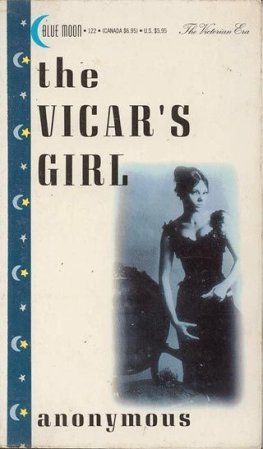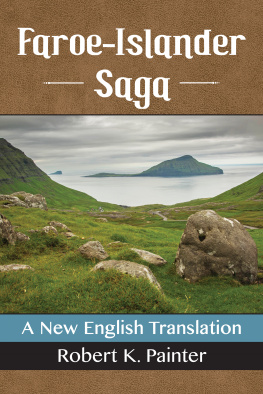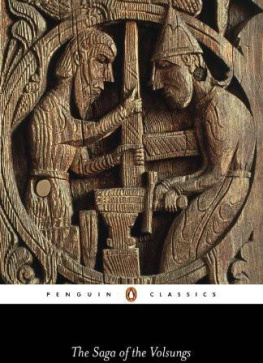SIR GEORGE DASENT'S PREFACE
(Abridged.)
What is a Saga? A Saga is a story, or telling in prose, sometimes mixed with verse. There are many kinds of Sagas, of all degrees of truth. There are the mythical Sagas, in which the wondrous deeds of heroes of old time, half gods and half men, as Sigurd and Ragnar, are told as they were handed down from father to son in the traditions of the Northern race. Then there are Sagas recounting the history of the kings of Norway and other countries, of the great line of Orkney Jarls, and of the chiefs who ruled in Faroe. These are all more or less trustworthy, and, in general, far worthier of belief than much that passes for the early history of other races. Again, there are Sagas relating to Iceland, narrating the lives, and feuds, and ends of mighty chiefs, the heads of the great families which dwelt in this or that district of the island. These were told by men who lived on the very spot, and told with a minuteness and exactness, as to time and place, that will bear the strictest examination. Such a Saga is that of Njal, which we now lay before our readers in an English garb. Of all the Sagas relating to Iceland, this tragic story bears away the palm for truthfulness and beauty. To use the words of one well qualified to judge, it is, as compared with all similar compositions, as gold to brass.
But it is an old saying, that a story never loses in telling, and so we may expect it must have been with this story. For the facts which the Saga-teller related he was bound to follow the narrations of those who had gone before him, and if he swerved to or fro in this respect, public opinion and notorious fame was there to check and contradict him. But the way in which he told the facts was his own, and thus it comes that some Sagas are better told than others, as the feeling and power of the narrator were above those of others. To tell a story truthfully was what was looked for from all men in those days; but to tell it properly and gracefully, and so to clothe the facts in fitting diction, was given to few, and of those few the Saga teller who first threw Njala into its present shape, was one of the first and foremost.
With the change of faith and conversion of the Icelanders to Christianity, writing, and the materials for writing, first came into the land, about the year 1000. There is no proof that the earlier or Runic alphabet, which existed in heathen times, was ever used for any other purposes than those of simple monumental inscriptions, or of short legends on weapons or sacrificial vessels, or horns and drinking cups. But with the Roman alphabet came not only a readier means of expressing thought, but also a class of men who were wont thus to express themselves.... Saga after Saga was reduced to writing, and before the year 1200 it is reckoned that all the pieces of that kind of composition which relate to the history of Icelanders previous to the introduction of Christianity had passed from the oral into the written shape. Of all those Sagas, none were so interesting as Njal, whether as regarded the length of the story, the number and rank of the chiefs who appeared in it as actors, and the graphic way in which the tragic tale was told. As a rounded whole, in which each part is finely and beautifully polished, in which the two great divisions of the story are kept in perfect balance and counterpoise, in which each person who appears is left free to speak in a way which stamps him with a character of his own, while all unite in working towards a common end, no Saga had such claims on public attention as Njala, and it is certain none would sooner have been committed to writing. The latest period, therefore, that we can assign as the date at which our Saga was moulded into its present shape is the year 1200....
It was a foster-father's duty, in old times, to rear and cherish the child which he had taken from the arms of its natural parents, his superiors in rank. And so may this work, which the translator has taken from the house of Icelandic scholars, his masters in knowledge, and which he has reared and fostered so many years under an English roof, go forth and fight the battle of life for itself, and win fresh fame for those who gave it birth. It will be reward enough for him who has first clothed it in an English dress if his foster-child adds another leaf to that evergreen wreath of glory which crowns the brows of Iceland's ancient worthies.
Broad Sanctuary.
Christmas Eve, 1860.
It will be seen that in most cases the names of places throughout the Saga have been turned into English, either in whole or in part, as "Lithend" for "Lfarendi," and "Bergthorsknoll" for "Bergthorshvl". The translator adopted this course to soften the ruggedness of the original names for the English reader, but in every case the Icelandic name, with its English rendering, will be found in the maps. The surnames and nicknames have also been turned into Englishan attempt which has not a little increased the toil of translation. Great allowance must be made for these renderings, as those nicknames often arose out of circumstances of which we know little or nothing. Of some, such as "Thorgeir Craggeir," and "Thorkel foulmouth," the Saga itself explains the origin. In a state of society where so many men bore the same name, any circumstance or event in a man's life, as well as any peculiarity in form or feature, or in temper and turn of mind, gave rise to a surname or nickname, which clung to him through life as a distinguishing mark. The Post Office in the United States is said to give persons in the same district, with similar names, an initial of identification, which answers the same purpose, as the Icelandic nickname, thus: "John P Smith.""John Q Smith". As a general rule the translator has withstood the temptation to use old English words. "Busk" and "boun" he pleads guilty to, because both still linger in the language understood by few. "Busk" is a reflective formed from 'eat ba sik,' "to get oneself ready," and "boun" is the past participle of the active form "ba, binn," to get ready. When the leader in Old Ballads says
"Busk ye, busk ye,
My bonny, bonny men,"
he calls on his followers to equip themselves; when they are thus equipped they are "boun". A bride "busks" herself for the bridal; when she is dressed she is "boun". In old times a ship was "busked" for a voyage; when she was filled and ready for sea she was "boun"whence come our outward "bound" and homeward "bound". These with "redes" for counsels or plans are almost the only words in the translation which are not still in everyday use.
SIR GEORGE DASENT'S INTRODUCTION.
(Abridged).
The Northmen in Iceland.
The men who colonized Iceland towards the end of the ninth century of the Christian ra, were of no savage or servile race. They fled from the overbearing power of the king, from that new and strange doctrine of government put forth by Harold Fairhair, 860-933, which made them the king's men at all times, instead of his only at certain times for special service, which laid scatts and taxes on their lands, which interfered with vested rights and world-old laws, and allowed the monarch to meddle and make with the freemen's allodial holdings. As we look at it now, and from another point of view, we see that what to them was unbearable tyranny was really a step in the great march of civilization and progress, and that the centralization and consolidation of the royal authority, according to Charlemagne's system, was in time to be a blessing to the kingdoms of the north. But to the freeman it was a curse. He fought against it as long as he could; worsted over and over again, he renewed the struggle, and at last, when the isolated efforts, which were the key-stone of his edifice of liberty, were fruitless, he sullenly withdrew from the field, and left the land of his fathers, where, as he thought, no free-born man could now care to live. Now it is that we hear of him in Iceland, where Ingolf was the first settler in the year 874, and was soon followed by many of his countrymen. Now, too, we hear of him in all lands. Now Francenow Italynow Spain, feel the fury of his wrath, and the weight of his arm. After a time, but not until nearly a century has passed, he spreads his wings for a wider flight, and takes service under the great emperor at Byzantium, or Micklegarththe great city, the town of townsand fights his foes from whatever quarter they come. The Moslem in Sicily and Asia, the Bulgarians and Slavonians on the shores of the Black Sea and in Greece, well know the temper of the Northern steel, which has forced many of their chosen champions to bite the dust. Wherever he goes the Northman leaves his mark, and to this day the lion at the entrance to the arsenal at Venice is scored with runes which tell of his triumph.

















